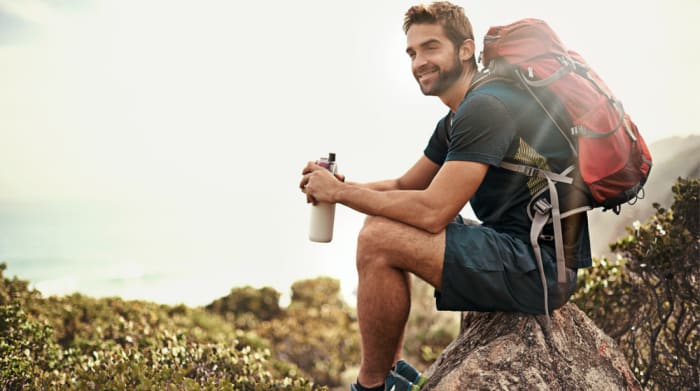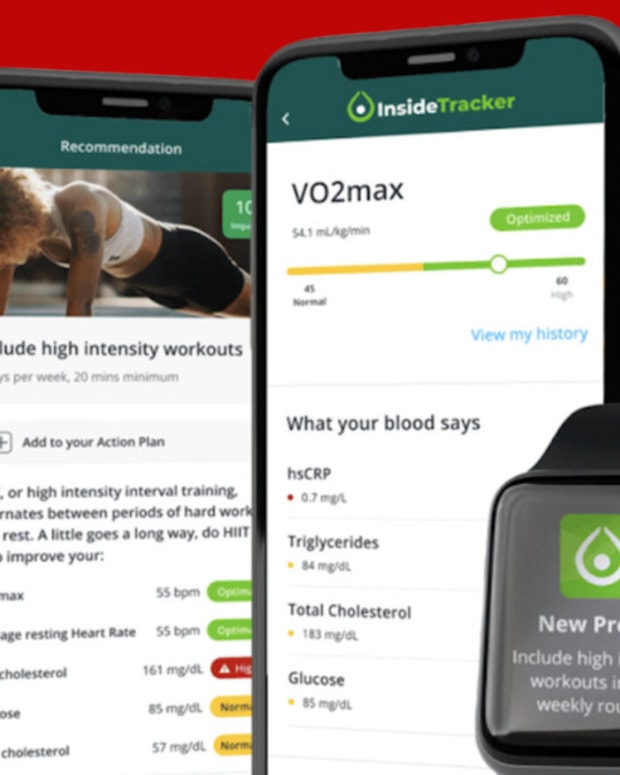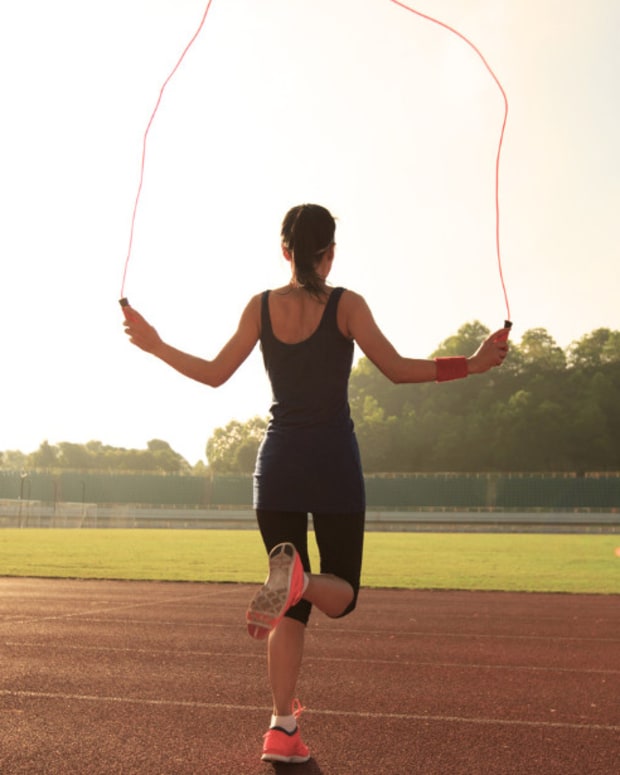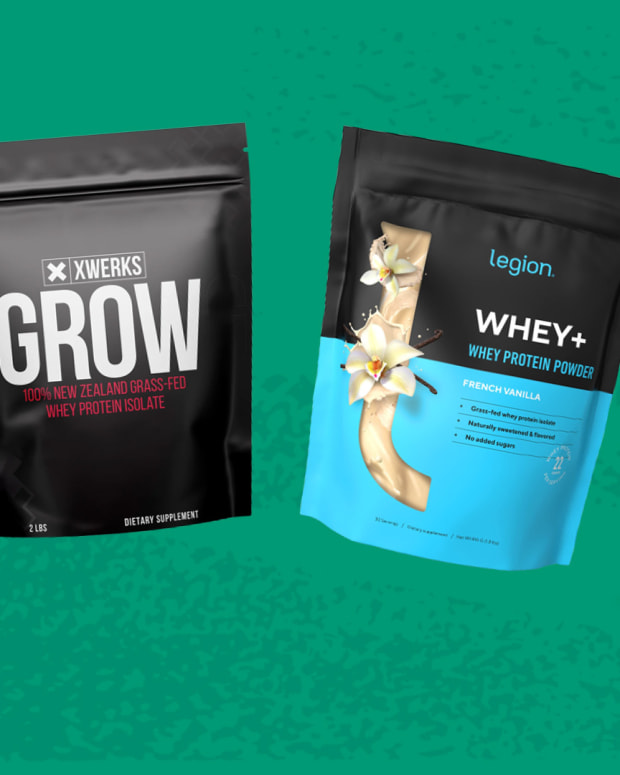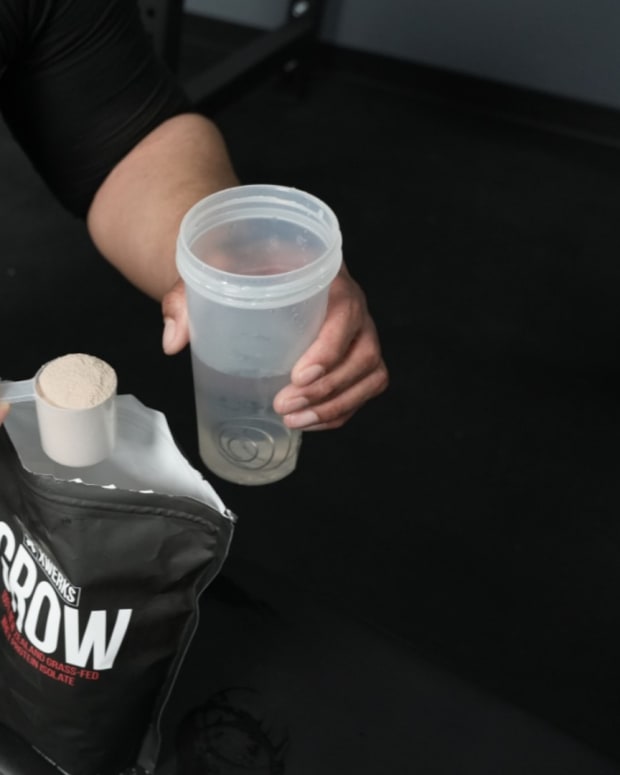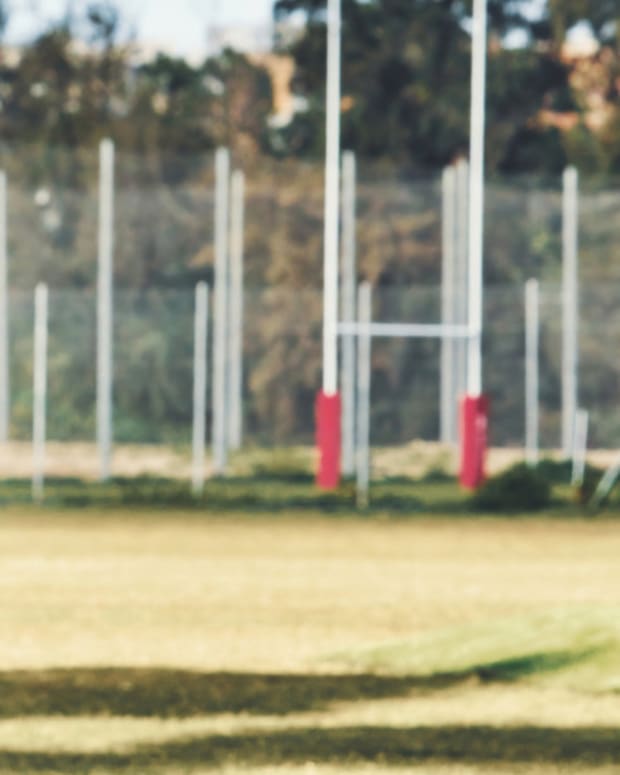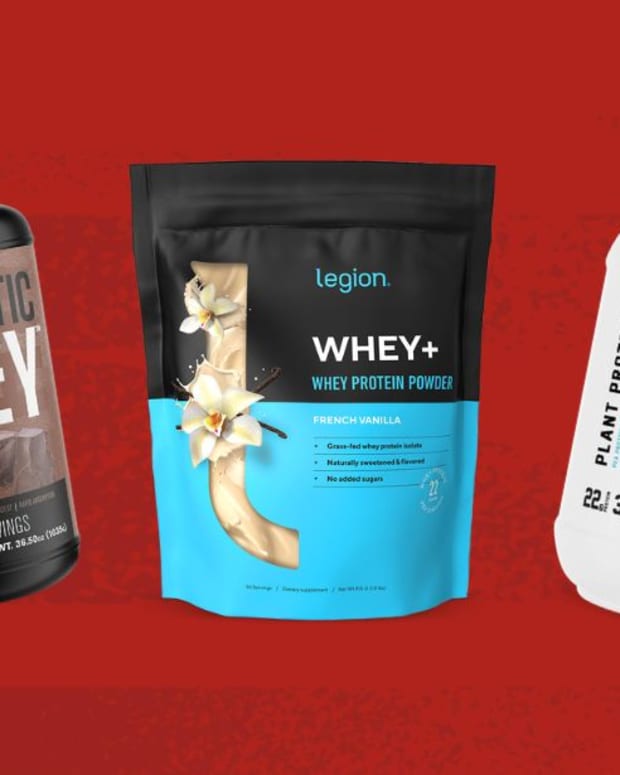The products featured in this article have been independently reviewed. When you buy something through the retail links on this page, we may earn commission at no cost to you, the reader. Sports Illustrated editorial staff are not involved in the creation of this content. Learn more here.
Hiking backpacks have come a long way in the past few decades. You no longer have to lug around heavy packs with rigid frames, breaking your back as you try to enjoy the wilderness around you.
Most avid hikers and backpackers want ergonomic designs with thoughtful features. But, of course, with so many hiking backpacks on the market, finding the best one for your needs can be difficult.
Luckily, we've done the research to find some of the most comfortable, feature-rich hiking backpacks on the market in 2024.
Come on this journey with us to learn more about our top picks for hiking backpacks!
Our Picks for the Best Hiking Backpacks of 2024:
- Best Overall Hiking Backpack: Osprey Farpoint Trek 55L Travel Pack
- Best Backpack for Thru Hiking: Osprey Atmos AG 65L Backpack
- Best Lightweight Backpack for Hiking: Hyperlite Mountain Gear 3400 Southwest 55L Backpack
- Best Hydration Backpack for Hiking: Osprey Katari 1.5L Backpack
- Best Budget Hiking Backpack: Burton Kilo 2.0 27L Backpack
- Best Waterproof Hiking Backpack: Patagonia Black Hole 32L Backpack
- Best Hiking Backpack Under $100: Thule AllTrail X 15L Backpack
- Best Overnight Hiking Backpack: Gregory Baltoro 75L Backpack
- Most Comfortable Hiking Backpack: Osprey Exos 58L Backpack
Best Overall Hiking Backpack: Osprey Farpoint Trek 55L Travel Pack
The Osprey Farpoint Trek 55L Travel Pack is one of the best hiking backpacks for journeying to far-off destinations. It's a hybrid of sorts, with features that teeter between a travel pack and a backpacking pack, allowing you to store all of your essentials.
On the front, you'll find a luggage-style panel, perfect for easy packing and unpacking. You'll find a trampoline-style back, which is a pretty standard feature for trekking backpacks. This helpful feature provides ventilation by keeping your pack from pushing up against your back. Even if you're hiking in hot climates, you can prevent an unwanted sweaty back!
The adjustable suspension system height has four different settings, depending on your height.
Over the top pocket, you'll find a handy rain cover, providing another layer of protection on the already weather-resistant bag. The top pocket just underneath the strap allows for easy access to the contents in your bag.
One thing we truly love about this backpack is the organization system. For starters, the sleeve nearest to the back offers room for smaller items, such as socks and underwear. Just above this part of the pack are two flaps, in which you can store larger items, such as your clothes.
Lastly, you'll find zippers on the flaps with a few small pouches for your essentials, such as your keys, wallet and sunscreen.
Overall, if you're a serious trekker with long-term travel plans, the Osprey Farpoint Trek 55L is an excellent option.
Key features:
- Material - 420HD Nylon Packcloth
- Frame - 4 mm LightWire peripheral frame
- Number of pockets - 7
- Dimensions - 28.37 inches H x 15.37 inches W x 12.21 inches
- Weight - 4.23 pounds
- Volume/capacity - 3,356 IN3 / 55 L
Pros:
- Four-level adjustable height system
- Integrated compression system
- Trampoline-style back
- Rain flap for additional protection
Cons:
- No laptop compartment
- No central pouch for storing smaller items
Best Backpack for Thru Hiking: Osprey Atmos AG 65L Backpack
With excellent suspension and a variety of quality features, the Osprey Atmos AG 65 is one of the best thru-hiking backpacks on the market. The plush shoulder strap provides optimal comfort, while the Anti-Gravity (AG) suspension system distributes weight around the pack, taking the idea of trampoline-style suspension to all new heights.
You can easily load 40 pounds on your back without feeling bogged down or sweaty. There's a reason why this pack has somewhat of a cult following. It was a game-changer when it first arrived on the scene, popularizing the trampoline-style back panel.
The trampoline mesh on the back is pretty standard in most hiking backpacks, though the Anti-Gravity system takes it a step further with the hip-hugging belt. This unique belt eliminates pressure points and high-friction spots. There's plenty of padding around the shoulders, though the tapered construction makes for a thinner design around the mid-chest.
Of course, you get a well-ventilated harness, great for adventurers who find themselves getting sweaty often. Pair that with the LightWire peripheral tension frame and you can transfer pretty heavy loads with efficiency.
Key features:
- Material - Bluesign Recycled 210D Honey Comb Nylon
- Frame - 4mm powder-coated full peripheral frame
- Number of pockets - 6
- Dimensions - 34.6 inches H x 15.35 inches W x 14.7 inches D
- Weight - 4.8 Pounds
- Volume/capacity - 68 L
Pros:
- Super comfortable suspension
- Optimal storage space
- Adjustable hip belt for supporting heavy loads
Cons:
- No rain cover included
- Zippers are difficult to open and close with one hand
Best Lightweight Backpack for Hiking: Hyperlite Mountain Gear 3400 Southwest 55L Backpack
While there are certainly many lightweight backpacks on the market for hiking, none of them quite takes the cake, like the Osprey Atmos AG 3400. The thing that differentiates this backpack from others in the same range is the Dyneema construction, which provides low weight, total water resistance and incredible durability.
You won't find a design out there more streamlined than this one, especially in the same weight class. The Hyperlite Mountain Gear 3400 Southwest is capable of handling very heavy loads with ease, thanks to the aluminum stays and the foam back panel, which is probably why it has become one of the most popular trail backpacks in recent years.
It has 3,400 cubic inches of space, hence the name, giving you all of the necessary room for long trips. Whether you're heading up the mountain for a weekend trek or taking the raft out on a river excursion, you'll have plenty of room for all of your essentials.
Of course, it's worth noting that the overall design is pleasantly basic. You get a single main compartment and a couple of additional pockets on the exterior to organize smaller belongings. We do love the larger size of the hip belt pockets compared to most bags, providing more than enough room for bigger smartphones.
Key features:
- Material - Dyneema 50 & 150D
- Frame - Dual internal aluminum stays
- Number of pockets - 4
- Dimensions - 34 inches H x 10.5 inches W
- Weight - 1.98 pounds
- Volume/capacity - 55 L
Pros:
- Ultra-durable Dyneema material
- A solid set of features
- Very comfortable for longer excursions
Cons:
- Relatively expensive
- Not the best organizational design
Best Hydration Backpack for Hiking: Osprey Katari 1.5L Backpack
If you need a lightweight backpack to keep you hydrated on the trail, we recommend checking out the Osprey Katari 1.5L Backpack. It's an ideal pack for trail runs and shorter day hikes, offering a small hydration bladder for 1.5 liters of water.
It has also become a popular choice for the mountain biking community with its lightweight design and AirScape backpanel, which provides airflow, keeping you from getting hot and sweaty.
On the inside, you'll find a foam sheet that supports the hydration bladder's additional weight, providing you with a bit more structure throughout the entire backpack. It comes with body-conforming shoulder straps, which use a stretchy material to ensure the pack doesn't flop around at higher speeds.
One thing we truly love about the Osprey Katari 1.5L is the bite valve’s accessibility. The Katari has a small magnetic sternum strap that holds the bite valve in place, keeping it readily available when you need it most.
Another feature we've found surprisingly helpful is the taillight loop, which is great if you're ever on the trail after sundown. The flasher provides plenty of visibility for your safety.
Overall, if you need an ultra-light pack with a hydration sleeve that can get you through those summer day hikes, this little pack from Osprey is a surefire-pleaser.
Key features:
- Material - 100D Mini Diamond Shadow Nylon / 600D Polyester
- Frame - Frameless / Atilon Foam
- Number of pockets - 1
- Dimensions - 14.6 inches H x 7.9 inches W x 4.7 inches D
- Weight - 0.7 Pounds
- Volume/capacity - 1.5 L
Pros:
- Small and lightweight design
- Strap conforming design stops the pack from shifting at high speeds
- Very affordable
Cons:
- Can't support multi-day adventures
- Minimal storage space
Best Budget Hiking Backpack: Burton Kilo 2.0 27L Backpack
There's no doubt that pro hiking backpacks can be expensive. If you're on a budget yet have some larger storage needs, the Burton Kilo 2.0 is a nice and roomy selection. Don't let the lower price tag fool you, however, as this pack is made to do it all. Whether you're going on a day hike in the summer heat or heading out to the beach for a few hours, the Burton Kilo 2.0 offers plenty of versatility.
The carrying straps are ultra-comfortable for carrying heavy loads and you'll also find a few additional straps on the exterior for strapping up your board. After all, Burton is a snowboarding company.
If you just need to get some work done at your local coffee shop for the day, you'll love the padded sleeves for laptop storage.
One unique feature found on the inside of the Burton Kilo 2.0 is the fleece-lined pocket, which is great for safe, scratch-free sunglass storage.
You'll also find plenty of additional storage pockets for smaller essentials, as well as an exterior bottle pocket to stay hydrated.
Key features:
- Material - 600D Ripstop nylon Polyester
- Frame - Frameless
- Number of pockets - 6
- Dimensions - 19 inches H x 11 inches W x 7 inches D
- Weight - 1.3 Pounds
- Volume/capacity - 27 L
Pros:
- Lightweight design
- Very affordable price tag
- Plenty of small storage options
Cons:
- Does not have back panel ventilation
- No hipbelt for weight distribution
Best Waterproof Hiking Backpack: Patagonia Black Hole 32L Backpack
Unexpected rainstorms, trips to the beach or riverside excursions often call for a heavy-duty waterproof backpack. This is where packs like the Patagonia Black Hole 32L come in handy.
The backpack is made with dense polyurethane and multiple layers of water-resistant coating, helping to keep all of your essentials dry while on the trail. You won't find this level of waterproofing in the majority of daypacks, which is what truly sets the Black Hole apart.
Beyond its waterproof design, it is one of the most durable packs on the list, great for rugged backcountry adventures. The additional daisy chain loops allow you to attach tons of different types of gear, such as trekking poles.
Of course, if you just need a carry pack to head out to your local coffee shop to get some work done on your laptop, you'll love the padded laptop sleeve.
You'll even find a small pocket in the back that is compatible with hydration pack bladders if the stretchy water bottle side pockets aren't enough to quench your thirst!
Key features:
- Material - 300D recycled polyester ripstop with PU and DWR coating
- Frame - Frameless
- Number of pockets - 5
- Dimensions - 22 inches H x 10.5 inches W x 6.75 inches D
- Weight - 1.12 Pounds
- Volume/capacity - 32 L
Pros:
- Completely waterproof design
- Works with just about any hydration bladder of your choice
- Cool back panel that promotes airflow
Cons:
- Not the best organizational design
- Does not have a hipbelt for additional support
Best Hiking Backpack Under $100: Thule AllTrail X 15L Backpack
As we said before, hiking backpacks can get expensive very quickly (between $40 - $130), which is why we were surprised to see a company with such a strong reputation as Thule manufacturing create a quality pack for under a hundred bucks.
The Thule AllTrail 15L offers all of the features you'd need for an excellent day hike. It comes with enough capacity to carry all of your essentials while providing enough comfort and practicality for everyday use.
You'll find an internal hydration sleeve which can hold hydration reservoirs, as well as a few attachment points on the outside for hooking up all of your hiking accessories. Thule even added a few pockets on the outside for quick water bottle and snack accessibility.
If that storage isn't enough, you'll also find a small zipper pocket directly on top of the backpack for portable items, as well as a tiny pocket placed on one of the shoulder straps.
Essentially, storage optimization is one of the main highlights of this bag, especially if you're someone that likes to keep your gear organized.
Key features:
- Material - 300D recycled polyester ripstop with PU and DWR coating
- Frame - Frameless
- Number of pockets - 5
- Dimensions - 22 inches H x 10.5 inches W x 6.75 inches D
- Weight - 1.12 Pounds
- Volume/capacity - 32 L
Pros:
- Water-repellent wax canvas exterior
- Solid ventilation with the mesh back panel
- Comfortable padding on shoulder straps
Cons:
- Not much room for full-day excursions
- Hipbelt could use a bit more padding
Best Overnight Hiking Backpack: Gregory Baltoro 75L Backpack
When you head out on an overnight trip, it's important to have a backpack that can handle a bit more weight. The major selling point of the Gregory Baltoro 75L is that it offers 75 liters of internal space, more than any other backpack on this list.
Even with such a high capacity, you can carry your weight with comfort and ease.
You'll find a bit of additional hip belt padding to keep your midsection comfortable, as well as extra padding and adjustability on the AllTrail’s shoulder straps for a custom fit.
One unique feature we truly love is the load-lifter strap design, which shifts the weight of the bag near your center of gravity.
Unlike many bags on this list, the Baltoro includes a heavy-duty rain cover. For additional protection, it has a water-resistant hip pocket, which is great for storing small electronics, keys, wallets and other essential items.
Though it's a large backpack, the organizational design is remarkable. You have plenty of different spaces for your gear, making staying organized easier than ever.
Overall, we can't think of a better backpack for multi-day trips.
Key features:
- Material - 210D Honeycomb Cryptorip HD
- Frame - Aluminum frame
- Number of pockets - 8
- Dimensions - 32 inches H x 14 inches W x 13.5 inches D
- Weight - 5.4 Pounds
- Volume/capacity - 75 L
Pros:
- Tons of storage compartments and pockets for optimal organization
- Removable divider in the sleeping bag compartment
- Load-lifter straps for centering the weight
Cons:
- A bit heavy for consistent use
- The phone pocket isn't made for very large phones
Most Comfortable Hiking Backpack: Osprey Exos 58L Backpack
Osprey is one of the most popular hiking backpack manufacturers and it also happens to make one of the most comfortable hiking backpacks on the market today. This wildly comfortable pack is built to provide total comfort on multi-day trips.
In the grand scheme of things, this backpack is relatively lightweight, which makes it an excellent selection for anything from multi-day adventures to single-day hikes.
The suspension system is one of the best around, providing comfortable load distribution and more than enough airflow to keep you cool throughout the day.
It's one of the few backpacks on this list that truly excels with multi-day technical terrain hikes, too, all thanks to the attachment system, which Osprey labels as its inchesStow-On-The-Go inches system. When you need a hands-free moment, simply attach a set of trekking poles to continue forward.
The pack comes with a ultra-durable ripstop nylon at the top, which will outlast just about any other bag when it comes to unfriendly terrain features, such as rocks or branches.
Overall, you'd be hard-pressed to find another backpack in this size category with the same level of comfort.
Key features:
- Material - Bluesign-approved recycled 100D nylon ripstop
- Frame - Ultralight Airspeed 4mm LightWire frame
- Number of pockets - 7
- Dimensions - 30 inches H x 15 inches W x 13 inches D
- Weight - 2.91 Pounds
- Volume/capacity - 58 L
Pros:
- Ultra-comfortable and lightweight design
- Additional water resistance with strong water-repellent materials
- Stow-on-the-Go attachment system for hands-free movement
Cons:
- Carrying comfort dips over 30 pounds
- Hipbelt could use a bit more padding
How to Choose the Best Hiking Backpack for You
Type of backpack
The first thing you'll need to determine when looking for a new backpack is the type of backpack that you need. There are many different types of backpacks out there for different needs, though we often like to break it down to three types of backpacks:
- Daypacks
- Weekend Packs
- Extended-trip packs
Daypacks
Daypacks are usually around 10 to 25 liters in volume, perfect for a hike that will last you a few hours. These often come with features like breathable shoulder straps, adjustable chest straps, padding and multiple external pockets.
Some come with room for hydration bladders as well.
These are super efficient packs that are great for transporting essentials, such as snacks, water bottles and small pieces of hiking gear. You'll often find several compartments for smaller items, external attachment loops, rain covers, reservoir pockets and key clips.
Packing with these kinds of bags requires a fair amount of planning and discipline, as they don't provide much flexibility.
Weekend packs
Weekend packs are some of the most popular types of backpacks, as they are great for trips that last anywhere from two to three days. These backpacks will often range from 25 to 70 liters, depending on the number of items you want to bring along with you.
You'll often find all of the same features on these bags as you would in daypacks, as well as additional features, such as adjustable suspension, specific height adjustments, load-lifter shoulder straps, external attachment points and external gear loops for things like sleeping bags or helmets.
Extended-trip packs
Extended-trip or week-long packs are made for trips that last five days or longer. They are often 70 liters or more. If you're on a long trip or a winter trip that requires more gear to keep warm, you can't go wrong with an extended-trip pack. You can often pack a sleeping bag, tent and additional clothing in these bags.
You'll find many of the same features you find in weekend packs, as well as better compartment organization, waterproof pockets and more.
We highly recommend these larger backpacks to parents backpacking with young children, as young children are often unable to lug heavy gear for long periods.
Frame type
Beyond the backpack size you choose, you'll also want to look at the frame type. There are three main frame types you'll find when looking for backpacks, including:
- Frameless
- External frame
- Internal frame
Frameless backpacks
Frameless backpacks are for those devoted to the ultralight life, as they allow you to hike fast without much weight. Frameless packs are great for mountain biking and climbing and many of them come with detachable frames that you can easily install if necessary.
However, it's important to note that packs without frames become much more uncomfortable to wear when loaded up, especially on multi-day excursions.
External-frame backpacks
External-frame backpacks have external load-supporting structures. They often use aluminum hardware that sits on the outside of the backpack. These kinds of backpacks are wonderful for those who are carrying bulky, irregular-sized loads, including things like inflatable kayaks or tents.
You also have greater organizational options when you have an external frame, as well as solid ventilation.
Internal-frame backpacks
Most modern hiking backpacks are internal-frame backpacks. These body-hugging packs are made with frames inside the back panel of the pack's structure. They excel in keeping hikers stable, especially when traversing off-kilter or uneven terrain.
Many high-end internal frame backpacks use load-supporting technology for transferring weight burden to the hips, allowing wearers to use their center of gravity.
Fabrics
The types of materials used to construct a hiking backpack can have a big impact on how well it holds up over the years, especially if used rigorously.
Most lightweight hiking backpacks are made using nylon or DCF (Dyneema Composite Fabric) varieties.
Not only are these two variations of materials very lightweight, but they also offer water resistance. DCF is generally lighter and more water-resistant than nylon. However, you will end up spending more on DCF backpacks.
When looking at backpack specs, you'll also often see a letter 'D' next to the material label. For example, you might see a backpack that is 600D or 400D.
This 'D' stands for Denier, which is a unique measurement that takes durability and resistance into account. Higher denier numbers provide better durability.
Beyond the fabric found in your backpack, you should also consider the buckle material.
Is it plastic or metal?
Plastic buckles have less structural integrity and having one break while out on the trail can be a major hassle. On the other hand, metal buckles have more durability, though they also weigh more and can heat up when in the sun for long periods.
What to Look for in a Hiking Backpack
Now that we have the main types of backpacks out of the way let's dig a bit deeper and explore some of the best features you might consider when searching for the best hiking backpack.
Pack access
Look at most hiking backpacks these days and you'll see that top-loading packs are pretty standard. Most hikers know that the items closer to the bottom and on the sides will be the most difficult items to reach for quick access with a top-loading pack, so having a smart system for storing overnight gear when using these kinds of bags is crucial.
Some backpacks utilize panel access as well, allowing users to unzip the main compartment to get in without having to dig through the top. These kinds of packs will often cost more and are usually a bit heavier.
Ventilation
There are many types of ventilation options to choose from when buying hiking backpacks. Many buyers tend to look for suspended mesh back panels. This design pushes the back of the backpack away from your body for better circulation and less sweat on the back, which is often a consequence of internal-frame packs that hug the body.
Many manufacturers will refer to these types of bags as inchestension-mesh suspension inches bags, as they utilize a trampoline-style design that keeps the bag off of your back. Instead, your back will rest against mesh material, which is highly breathable and soft.
If you don't want to pay extra for a suspended mesh back panel, you might consider getting a backpack with ventilation channels instead. These small, chimney-like channels use a similar panel design to solve sweaty back problems.
Pockets
There are some hikers that like minimalistic, streamlined backpacks, while others like to have pockets on top of pockets for pure organizational functionality.
There are so many things to consider when it comes to pockets, though it's most important to consider the placement and size of each.
You might choose to look for a backpack with elastic side pockets, for example, which don't take up any space when empty, though it can be stretched out to fit tent poles, water bottles, snacks or other loose items. The great thing about these types of side pockets is that they are accessible, even when your backpack is still on.
There are also hipbelt pockets, which are great for accommodating smaller items, such as sunscreen, lip balm, phones, keys, etc.
Next, we have top-lid pockets. These are found on the tops of backpacks and are also great for smaller items, such as headlamps, sunglasses or multi-tools. You may consider looking for one with a soft lining on the inside to protect your glasses from getting scratched.
If you want to take your backpack around for daily use, you may consider getting one with a laptop sleeve on the inside.
Lastly, if you're a multi-season hiker or backpacker, consider looking for a pack with shovel pockets. These small flaps are found on the front sides of bags and are often equipped with buckle closures. While manufacturers originally made them to hold shovels, they can just as easily be used for other lightweight objects, such as axes, jackets or maps.
Sleeping bag compartment
If you're planning a multi-day excursion, you'll want a backpack with a sleeping bag compartment. These usually come in the form of a zippered compartment on the bag's bottom. While you can certainly buy a big enough pack to store your sleeping back in the main compartment, having an additional compartment is helpful for when you want to pull your sleeping bag out without moving any other gear around.
While these compartments are designed to carry sleeping bags, they can just as easily carry other pieces of gear that you want easy access to.
Removal daypack
Not every hiking trip will last multiple days, which is why you might consider getting a two-in-one backpack that comes with a removable daypack. These kinds of packs are great for short thru-hikes or day trips away from camp.
These daypacks will often detach from the main pack, converting into a lightweight backpack or hipbelt pack.
Comfort padding
Padding is super important if you have a minimalist backpack that doesn't have a frame for additional support. The last thing you want is to feel sore in your shoulders, back or hips, one day into the multi-day trip.
Look for bags that have extra padding around the hip belt or shoulder straps to combat this type of soreness.
Load-lifter straps
If you're getting a backpack made for more than a simple day hike, it should have load-lifter straps. Without these types of straps, you risk serious soreness after a long day of hiking. When you put a proper hiking backpack on your back, you fasten the hipbelt and pull the load-lifter straps so that the backpack is pulled into your back.
A backpack that is too loose will dangle off your back, providing less stability and hurting your shoulders.
Raincover
There's no better item to have with you at all times than a raincover, especially if you're not 100% sure there won't be rain. While most hiking backpacks utilize waterproof coating, that doesn't mean water can't get through the zippers and seams. Plus, during a serious downpour, the water weight will be absorbed into the exterior fabric.
This is where having a pack with an included raincover comes in handy. Of course, you can always line the inside of your pack with a garbage bag to keep your clothes and hiking socks dry as well, though a raincover is a far more professional style of waterproofing.
Attachment points
Having loops and attachment points that allow you to hoist your gear to the outside of your bag can be incredibly helpful. If you often find yourself traveling with trekking poles or ice axes, attachment points are crucial.
It's pretty rare that you'll find a backpack without a few tool loops on it. However, there are other options you might consider looking into for external attachments:
- Crampon patches: If you aren't careful, crampons can tear into your backpack, causing serious damage that you definitely don't want to deal with on your trip. With burly pieces of fabric stitched onto your backpack, you can prevent your crampon points from making holes.
- Daisy chains: If you have loose items that you don't want to fit inside your bag, such as multi-tools, helmets, wet clothes or irregular-shaped objects, you can loop them onto this stitched webbing on the outside of your pack.
- Additional gear loops: Sometimes, you'll find backpacks with additional loops on the low portions or hip belts. These kinds of loops can be incredibly helpful for extra gear that you want to be easily accessible or irregular items such as poles or skis.
Compression straps
Most overnight bags have compression straps, which are made to compress your backpack's volume to bring the load closer to your center of gravity. Most people will use these handy straps to attach bulky or oddly-shaped gear, such as tent bags, snowshoes or sleeping pads.
Hiking Backpack Packing Tips
1. Start with the proper pack
If you don't have the right pack for your upcoming trip, you're already off to a bad start. Get the right pack for your needs. It should be one that fits comfortably, has enough capacity for your gear and has any additional features tailored to the environment you'll be in.
2. Gather your gear
The gear that you will need to pack will depend on your specific trip. Of course, there's no doubt that you'll want to optimize space and keep your pack light.
The best thing you can do is pack only your essentials and nothing more. Your back will thank you later!
After you've gathered all of your essential gear, lay it out next to your backpack and go through the list to make sure you have everything before you start packing it in. You may even consider using smaller bags or pouches to separate gear and make it more accessible.
3. Pack In the bottom
The way in which you pack your gear will be completely different from the next person, as it'll depend on the types of items you're packing and the design of your bag.
For multi-day trips, however, you'll often want to pack your sleeping bag in the bottom of your backpack. For starters, you're not going to need to use your sleeping bag until you arrive at camp, so it doesn't need to be accessible. Second, it can provide a nice cushion for the rest of your gear to lie on. Lastly, you probably don't want heavy or bulky items digging into your lower back.
Some backpacks will have separate sleeping bag compartments as well.
Beyond your sleeping bag, you may consider packing other items in the bottom that don't need to be easily accessible, such as nighttime clothes or toiletries.
4. Move up to the middle
The middle of your hiking pack will require a lot of care, as this is where most of the weight will need to be strategically distributed. You don't want to feel off balance during your hiking trip, meaning you need to pack in such a way that the backpack gels with your body.
The heaviest items should go closest to your back in the middle of your pack. Lighter and smaller items can be placed toward the outside of the pack, furthest away from your back.
With proper weight distribution, your backpack shouldn't pull down hard on your shoulders.
5. Fill in the top
The items you most frequently use should be placed at the top of your backpack. You'll often see hiking backpacks with dedicated top compartments for small items. If you don't have a dedicated top pocket, we recommend bagging up your smaller items separately to make them more accessible and optimize internal space.
Some common top items include phones, cameras, toilet paper, headlamps, maps, snacks, sunscreen, small notebooks and sunglasses.
6. Utilize your accessory pockets
The great thing about accessory pockets is that they are made with accessibility in mind. There are certain things you'll want to have well within reach, such as your water bottle. You'll often find water bottle pockets and other exterior pockets on the outside portion of hiking backpacks.
Some other items you might put in your accessory pockets include your rain cover, gaiters or water filter.
7. Attach additional gear
Most bags come with lash-on points and tool loops that you can use to carry bulky or odd-shaped items that can't fit inside your backpack. For example, you can secure camping chairs, cooking pots, camping lanterns, sleeping pads, hiking boots or trekking poles.
Related Post: Best Camping Gear and Accessories
8. Test it out
Once you have your backpack packed and ready to go, test it out to see how it feels when lifted off the ground on your back. You should feel balanced when the backpack is on. You'll want to use your core to pick it up so you don't strain any of your back muscles.
Make any necessary adjustments and keep notes of how your bag is packed once you get it right, just in case you have to pack it again while out in the wild.
9. Strap up!
The first thing you'll want to do is tighten your hipbelt. This portion of the backpack should rest on your hip bones, directly in the middle. When adjusting the pack, remember that the greatest portion of the weight should not be on your shoulders but on your hips.
Once the hipbelt is properly adjusted, fix your shoulder straps, load-bearing strap and sternum strap to find the most comfortable position.
Now, obviously, there will be a fair amount of personal preference that goes into adjusting your backpack, though the main thing to concern yourself with is the weight distribution. The weight of your backpack should feel evenly distributed from the bottom up. If your backpack feels bottom-heavy, top-heavy or like it's pulling your back, you may need to make some more adjustments.
FAQs
What size backpack do I need for a three to five day hike?
If you're going on a three-day hike, you might want a backpack that is anywhere from 50 to 70 liters. A backpack that is more than 70 liters should be good for a five-day hike or longer.
Is a 50L backpack too big for a carry-on?
Bags that are larger than 45 liters can't be used as carry-ons. Even 50L backpacks that are marketed as carry-ons are often too big for carry-on use based on their dimensions.
How much should I spend on a hiking backpack?
The amount you choose to spend on a hiking backpack truly depends on your needs. There are plenty of budget-friendly backpacks out there that you can purchase for under $100. On the other hand, you'll also find plenty of high-end backpacks that go for $500 or more.
The more technical hiking you do, the more expensive the backpack you'll likely need. If you're just getting started, you can find a decent hiking backpack for around $100. These should be good enough for single-day trips.
On the other hand, if you're looking to get into long-distance excursions or multi-day trips, you might need to fork over around $200 to $300 to get a backpack with comfort and storage features.
Is ultralight backpacking gear worth it?
Ultralight backpacking outdoor gear is worth it if you want to carry multiple items without the additional weight burden. Having an ultralight backpack makes traveling over tough terrain much easier.
Related Post: Best Hiking Shoes for Your Adventures
What's the difference between a backpack and a hiking backpack?
A hiking backpack or backpacking backpack will have far more features used for hiking, including pouches for water bladders, external loops, front-loading patches, suspension systems and waterproof materials. Regular backpacks aren't made for carrying weight over long distances and usually only come with a few pockets, basic shoulder straps and laptop sleeves.
What should you not bring backpacking?
There are many things we would not recommend any person bring on backpacking trips, including:
- Additional clothing
- Large towels
- Jewelry
- Heavy camera gear
- Additional toiletries
- More than a single pair of jeans
- More than one heavy jacket
- Several pieces of cotton clothing
- Nice shoes
- Large books
- Pillows
Final Thoughts - Get Out And Go Hiking!
Having a quality backpacking backpack at your disposal is crucial for storing your essential gear and enjoying a comfortable excursion. There are so many hikers that traverse into the wild with poorly-made backpacks without enough room for gear. Not only is this very unsafe, but in many ways, it can ruin the experience.
With one of the high-quality hiking backpacks mentioned above, you'll be able to enjoy a fun, safe and memorable hiking adventure!
Prices are accurate and items are in stock as of publishing time.
